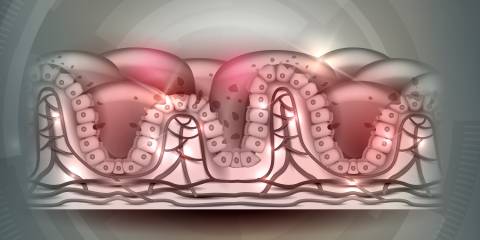It’s easy to feel confused when you hear the terms: celiac disease, non-celiac wheat sensitivity, wheat allergy. What do they mean? What are the differences between them?
A lot, it turns out. But the one thing they do have in common is they are medical issues that can be treated through diet. Whether it’s an eating plan that eliminates gluten or wheat will differ by diagnosis. Here’s a guide to help you better understand the differences between these conditions.
Dietary Problems with Gluten and Wheat
-
Celiac Disease
Approximately 1 out of 100 people have the genetic autoimmune condition known as celiac disease. There is currently no cure. A lifelong avoidance of any foods containing gluten must be strictly adhered to, as the body’s reaction to any ingested gluten causes a flattening of the cells lining the small intestine. This in turn leads to nutrient malabsorption and other serious health issues. Gluten is a protein found in wheat, barley, and rye, as well as any products or hybrids made from these grains.
There are more than 300 identified symptoms associated with this disease, including behavioral changes, stunted growth, anemia, infertility, and gastrointestinal issues (bloating, abdominal pain, diarrhea, and constipation). With such a large number of associated symptoms, diagnosing this disease can be challenging—combined with the fact that a significant amount of those with the disease may have few or no symptoms.
According to the Celiac Disease Center at Columbia University Medical Center, “Anyone who suffers from an unexplained, stubborn illness for several months should consider celiac disease a possible cause and be properly screened for it.” Approximately 83 percent of those with celiac disease remain undiagnosed.
-
Non-Celiac Wheat Sensitivity
Neither an allergy nor an autoimmune reaction, non-celiac wheat sensitivity (NCWS) is a not-well-understood condition in which a person experiences intestinal and extra-intestinal symptoms triggered by gluten ingestion.
In 2012, an internationally recognized group of celiac disease experts classified the condition as being separate from celiac disease. Some studies indicate that wheat components other than gluten may cause symptoms, so the term non-celiac wheat sensitivity has been suggested as opposed to non-celiac gluten sensitivity.
Depression, bloating, abdominal pain, diarrhea, constipation, headaches, chronic fatigue, and bone or joint pain are symptoms of both celiac disease and NCWS. Symptoms generally appear hours or even days after gluten has been consumed for those with NCWS. When gluten is removed from the diet, the person improves and symptoms resolve.
Although many of the symptoms are similar to those of celiac disease, individuals with NCWS do not test positive for celiac. There are no biomarkers or tests to identify NCWS. Celiac disease, wheat allergy, and any other possible reasons for symptoms are first ruled out. A gluten-free diet is then followed and if improvement is observed, gluten sensitivity may be the diagnosis.
It was once believed that those with NCWS did not experience intestinal damage. However, in July 2016, researchers at Columbia University Medical Center published a study confirming that wheat exposure for those with NCWS triggered a systemic immune reaction and accompanying intestinal cell damage. It’s believed that the number of people affected by this condition is equal to or may even exceed the number of those with celiac disease.
-
Wheat Allergy
An immune reaction to any of the multitude of proteins found in wheat, a wheat allergy occurs when the body’s T-cells deliver immunoglobulin E (IgE) antibodies to “attack” any ingested wheat. The rest of the body receives an alert that there is an issue. Symptoms ensue within minutes to hours, and can include nausea, abdominal pain, itching, swelling of the lips and tongue, breathing issues, hives, or anaphylaxis—a life-threatening reaction.
Those with a wheat allergy must eliminate all forms of wheat from their diet. They can, however, eat gluten from nonwheat sources.
A diagnosis for wheat allergy is conducted through skin prick tests, a food elimination diet, and a wheat-specific IgE blood test. A child diagnosed with a wheat allergy may outgrow it, but an adult with the allergy tends to have it for life.





